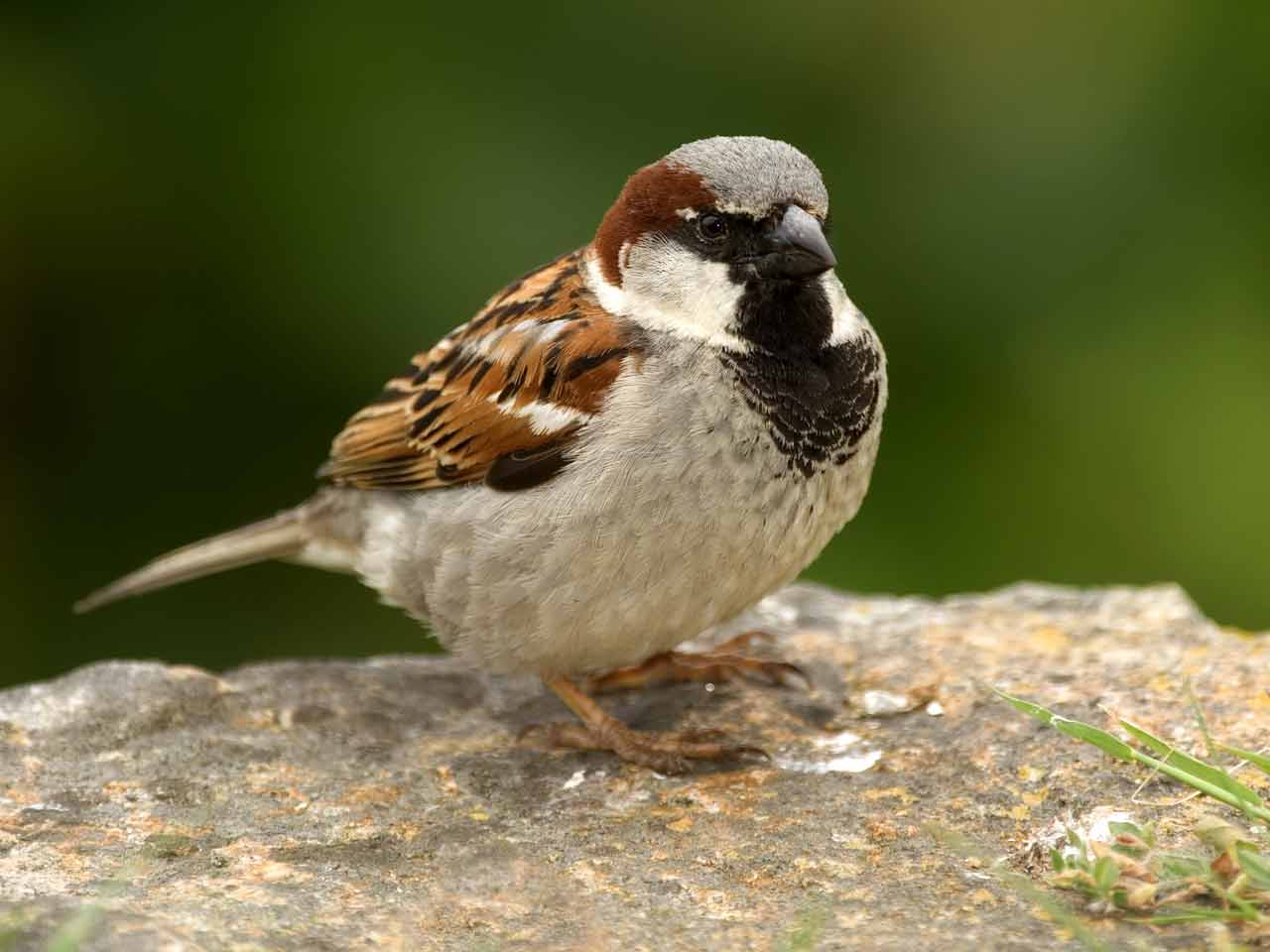
The House Sparrow, also known as Passer domesticus (passer is latin for 'sparrow' and domesticus is latin for 'house'), is famously known for living comfortably among humans. Though they are not officially domesticated, they will eat from the hand of a human and have come to depend on humans for nesting. House Sparrows are about 15 to 17 centimeters tall, weigh about 27-30 grams, and their wingspan is about 19-25 centimeters wide. House sparrows are sexually dimorphic which means that the male and female look different. The male has a chestnut colored back with black and white streaks. They also have a grey cap on their heads. Finally, they have a very noticeable black mark on their chests that indicates that they are a dominant breeding male. Females have brown backs with black stripes. They also have grayish brown underbellies. House sparrows can be found anywhere that humans are which pretty much means they are all over the world. They are in every continent except for Antarctica. They live in both rural and urban areas. Their status is low concern even though their population has decreased. House Sparrows hop around urban areas in flocks looking for food. Males will be more dominant in the winter and fall while the females will be more dominant in the spring and summer. House Sparrows both water and dust bathe. They eat seeds, crops, and anything else that they can find in terms of discarded human foods. To attract a female, they will fluff up their feathers, hop up and down towards her and bow up and down before her. House sparrows are considered an invasive species because the kill other birds to take their nests. This is a reason why many people don't like them in their backyards, because they kill off native species.
No comments:
Post a Comment